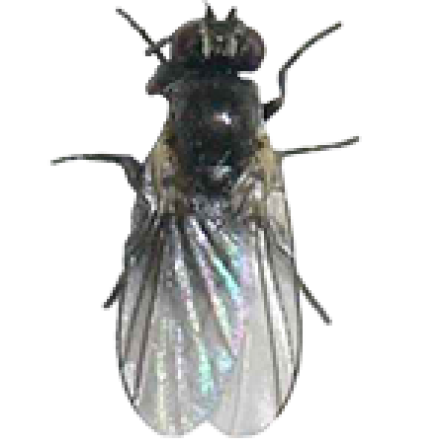

Leaf-miner flies
Leaf-miner flies belong to the family Agromyzidae, which systematically belong to the bipeds (Diptera). There are over 3000 species worldwide. Leaf-miner flies are 1-2 mm in size. They have a gray-black ground color and are yellow spotted. The larvae have the typical appearance of fly maggots.
Behaviour:
Harmful leaf miner flies occur on both vegetable and ornamental plants. Females lay eggs in plant tissue. After hatching, larvae feed through the assimilation tissue of leaves. Leaf miner flies are most prevalent during the summer months, as high temperatures are preferred.
Damage/illnesses:
Adult leaf miner flies damage plants by piercing them while sucking plant sap. The larvae of leaf miners form characteristic feeding tunnels (mines) in leaves of infested plants. The first signs of infestation are feeding holes in the leaf tissue. The mines can cause premature aging and dropping of the leaves. This is unsightly and slows plant growth. Heavily infested plants may die.
Control:
When buying plants, care should be taken to take only healthy plants. In the case of insecticides, only those with systemic action (uptake by the root and distribution of the active ingredient in the plant sap) can be used successfully. Sticky traps can be used both to monitor the population and to control infestations by mass trapping of the flies.
Prophylaxis:
Use Neocid Expert Yellow Trap for infestation detection.




